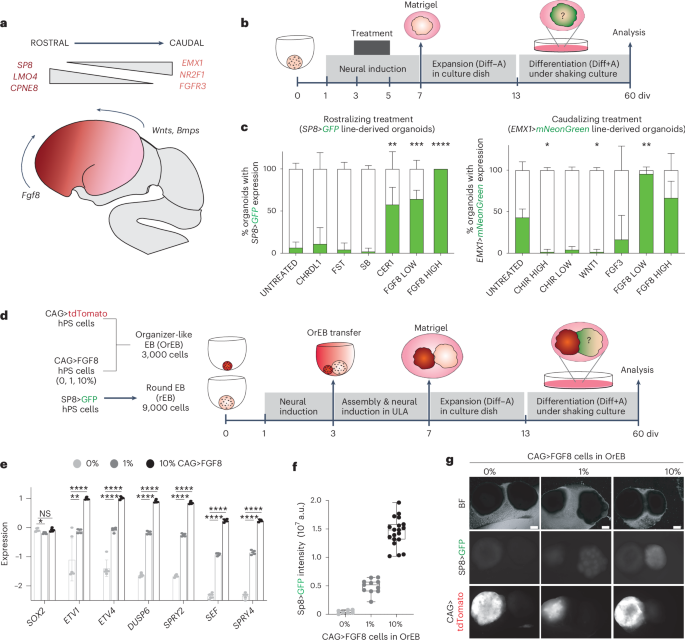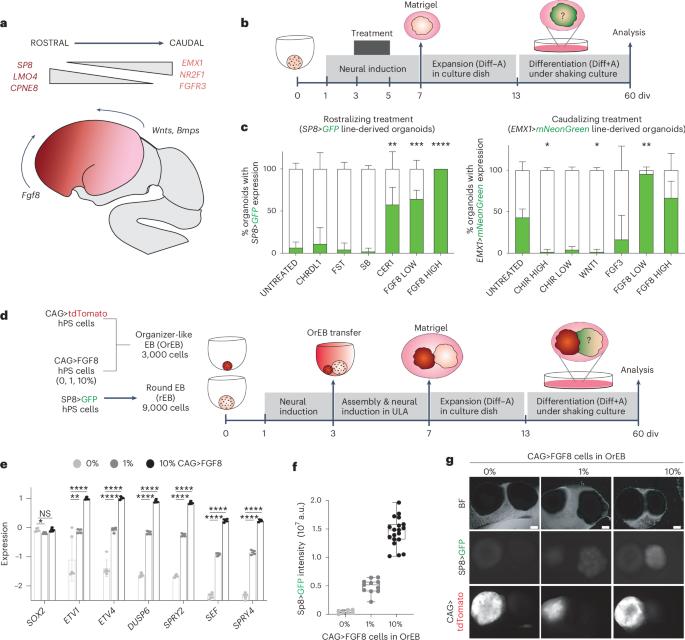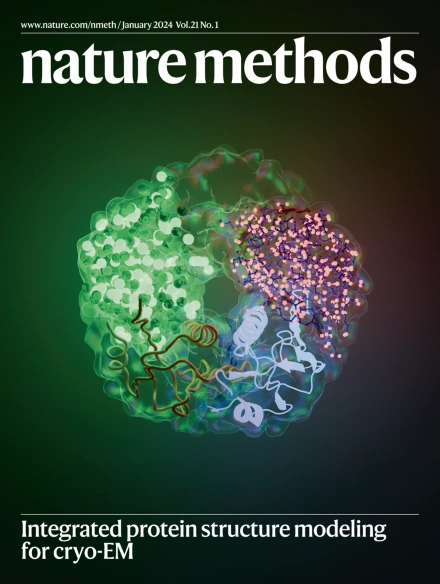极化的 FGF8 信号源可确定大脑皮层集合体空间定向细胞群的额颞叶特征
IF 36.1
1区 生物学
Q1 BIOCHEMICAL RESEARCH METHODS
引用次数: 0
摘要
在不同区域生成主要皮质细胞类型的有机体被用于研究皮质的发育、进化和失调。然而,目前的系统缺乏传递大脑皮层位置信息和形貌的形态发生梯度,这阻碍了对复杂表型的研究。在这里,我们通过将表达成纤维细胞生长因子8(FGF8)的组织器样结构与拉长的类器官融合在一起来设计人类大脑皮层组装体,从而实现沿类器官纵轴对FGF8信号的可控调节。这些极化的皮质集合体安装了一个位置依赖性转录程序,该程序部分与体内喙向基因表达模式相匹配,而当与颞叶畸形和智力障碍相关的FGFR3基因发生突变时,该程序就会丢失。通过在单个拼装体中产生具有额叶和颞叶特征的空间定向细胞群,该模型部分重现了原图中的早期转录分化,并能研究人类疾病背后的皮质区域相关改变。本文章由计算机程序翻译,如有差异,请以英文原文为准。


A polarized FGF8 source specifies frontotemporal signatures in spatially oriented cell populations of cortical assembloids
Organoids generating major cortical cell types in distinct compartments are used to study cortical development, evolution and disorders. However, the lack of morphogen gradients imparting cortical positional information and topography in current systems hinders the investigation of complex phenotypes. Here, we engineer human cortical assembloids by fusing an organizer-like structure expressing fibroblast growth factor 8 (FGF8) with an elongated organoid to enable the controlled modulation of FGF8 signaling along the longitudinal organoid axis. These polarized cortical assembloids mount a position-dependent transcriptional program that in part matches the in vivo rostrocaudal gene expression patterns and that is lost upon mutation in the FGFR3 gene associated with temporal lobe malformations and intellectual disability. By producing spatially oriented cell populations with signatures related to frontal and temporal area identity within individual assembloids, this model recapitulates in part the early transcriptional divergence embedded in the protomap and enables the study of cortical area-relevant alterations underlying human disorders. Cortical development is influenced by morphogen gradients. To mimic patterning events during brain development, polarized cortical assembloids are generated with the help of a localized FGF8 source.
求助全文
通过发布文献求助,成功后即可免费获取论文全文。
去求助
来源期刊

Nature Methods
生物-生化研究方法
CiteScore
58.70
自引率
1.70%
发文量
326
审稿时长
1 months
期刊介绍:
Nature Methods is a monthly journal that focuses on publishing innovative methods and substantial enhancements to fundamental life sciences research techniques. Geared towards a diverse, interdisciplinary readership of researchers in academia and industry engaged in laboratory work, the journal offers new tools for research and emphasizes the immediate practical significance of the featured work. It publishes primary research papers and reviews recent technical and methodological advancements, with a particular interest in primary methods papers relevant to the biological and biomedical sciences. This includes methods rooted in chemistry with practical applications for studying biological problems.
 求助内容:
求助内容: 应助结果提醒方式:
应助结果提醒方式:


